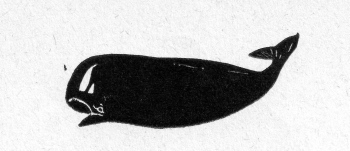Cipaille the oldest way
As the title indicates, this is the earliest Canadian recipe in print for cipaille, as opposed to the English ‘sea pie’ from which it stems, both phonetically and culinarily. Mrs. Glasse has an English recipe in the eighteenth century; the Francophone variant does not appear until the mid-twentieth, in the superb little compilation of recipes assembled by the members of the Black Whale, a shop in the Gaspé peninsula dedicated first to the preservation of Gaspé material culture and then, with the publication of The Black Whale Cook Book in 1949, Gaspé foodways as well. Like the other recipes in the Cook Book, it is a good one. Cipaille and sea pie for that matter often have been enriched with up to six layers of pastry, both within and containing the filling of the pie. The Royal Navy called them six deckers (or four, three and so on) during the age of fighting sail and in Francophone Canada an alternative spelling, six-pates, as developed as a result. This is our version of their recipe modified to the standard britishfoodinamerica format, which is both clearer and more detailed than the original.
 -6 thick bacon slices
-6 thick bacon slices
-about 2 cups thinly sliced onion
-about ½ cup chopped parsley
-about 1/3 cup flour seasoned with salt and pepper
-a chicken cut into 10 serving pieces (cut each breast in half and separate the wings)
-about 1 lb ground pork or ham, or half of each, seasoned generously with ‘fines herbes.’ Use whatever fresh herbs you have to hand.
-about a cup of breadcrumbs
-basic bfia pastry dough (see the Notes)
-a beaten egg yolk
- Fry the bacon in a casserole until crisp and remove them.
- Fry the onions and parsley just until the onions soften. Remove them too, and keep them separate from the bacon.
- Roll the chicken pieces in the seasoned flour and lightly brown them in the casserole. Cover the poultry with hot water, add salt and pepper to taste, and simmer under a tight cover for 35–45 minutes or until tender (see the Notes).
- Line a deep pie dish with half of the pastry. First add a layer of ground meat; next, add a layer of breadcrumbs, onions and herbs.
- Add the chicken with its juices and fill the pie with water until it [almost] reaches the top of the dish.
- Cover the chicken with the bacon, followed by the rest of the pastry; cut a hole in the middle to let off steam and ‘prevent the pastry from drying out.’
- Brush the pastry top with the yolk of an egg and bake for 2 hours in a 350° oven.
Notes:
- The Editor is grateful to Gervaise Mourlet and Stephanie Dearmont for their translation of this recipe from the original French.
- Our recipe for basic pie pastry appears in both our archive and in the practical, or use your own favorite.
- The Black Whale recipe suggests using turkey or partridge as alternatives to chicken. Obviously you would use less than an entire turkey and would need at least two and probably three partridges if you can get hem at all. They are closer in texture and flavor to the long lost carrier pigeon and make a particularly good cipaille.
- The Black Whale also pays a certain homage to the sometime traditional layers of internal pastry without using them. Instead, the recipe is clever enough to use the breadcrumbs to make a sort of deconstructed and uniformly distributed forcemeat-like texture and tone. Simpler than all that pastry and no risk of a leaden pie either.
- The time for cooking the chicken at Step 3 that appears in single quotation marks is faithful to the original cook but she would have used a tough old hen. Contemporary cooks who do not live on farms will only find a younger bird and therefore should reduce the cooking time to compensate, to as little as 25 minutes. Check a breast piece with a knife; it is braising rather than roasting so no harm will be done.
- Chicken stock is a good alternative to the water specified at Step 5; anathema perhaps to a frugal Acadian but enriching nonetheless.

